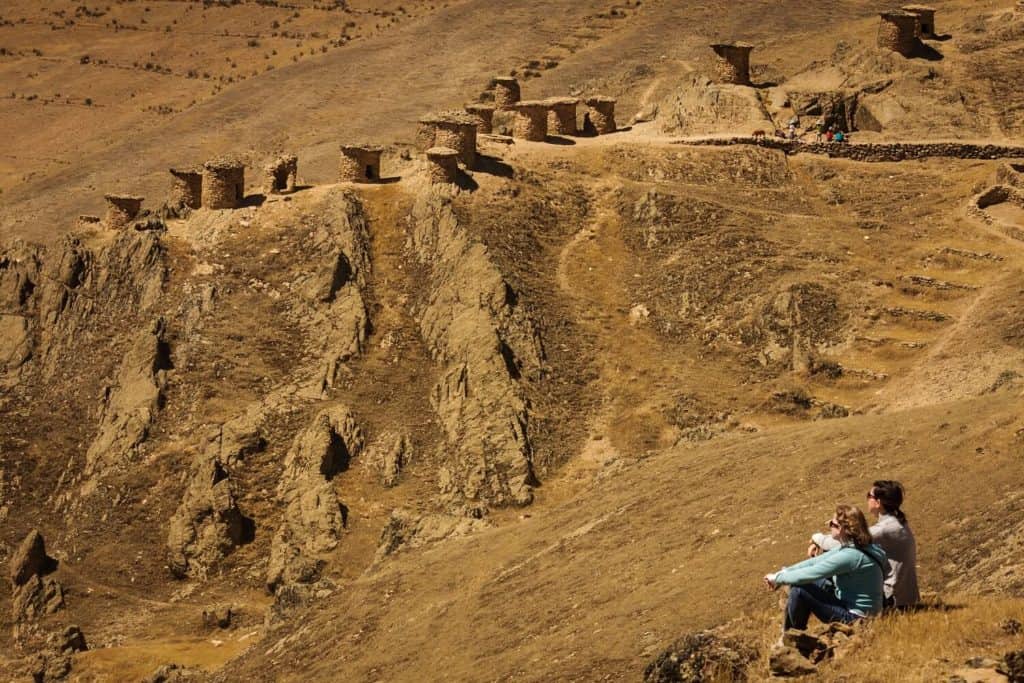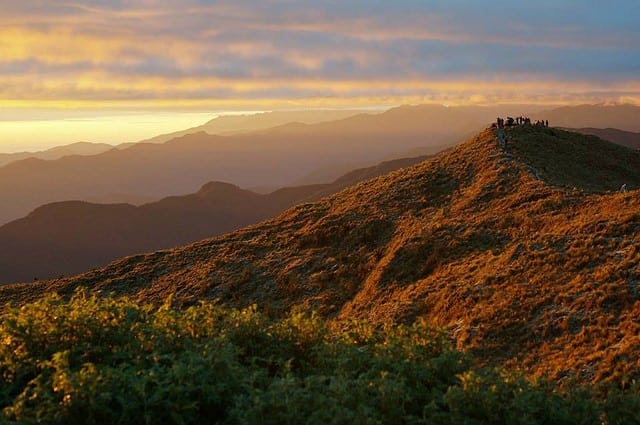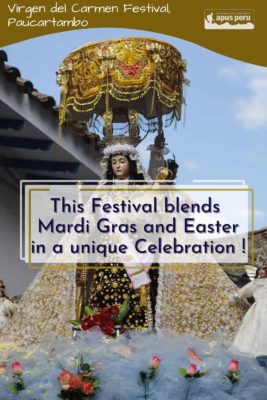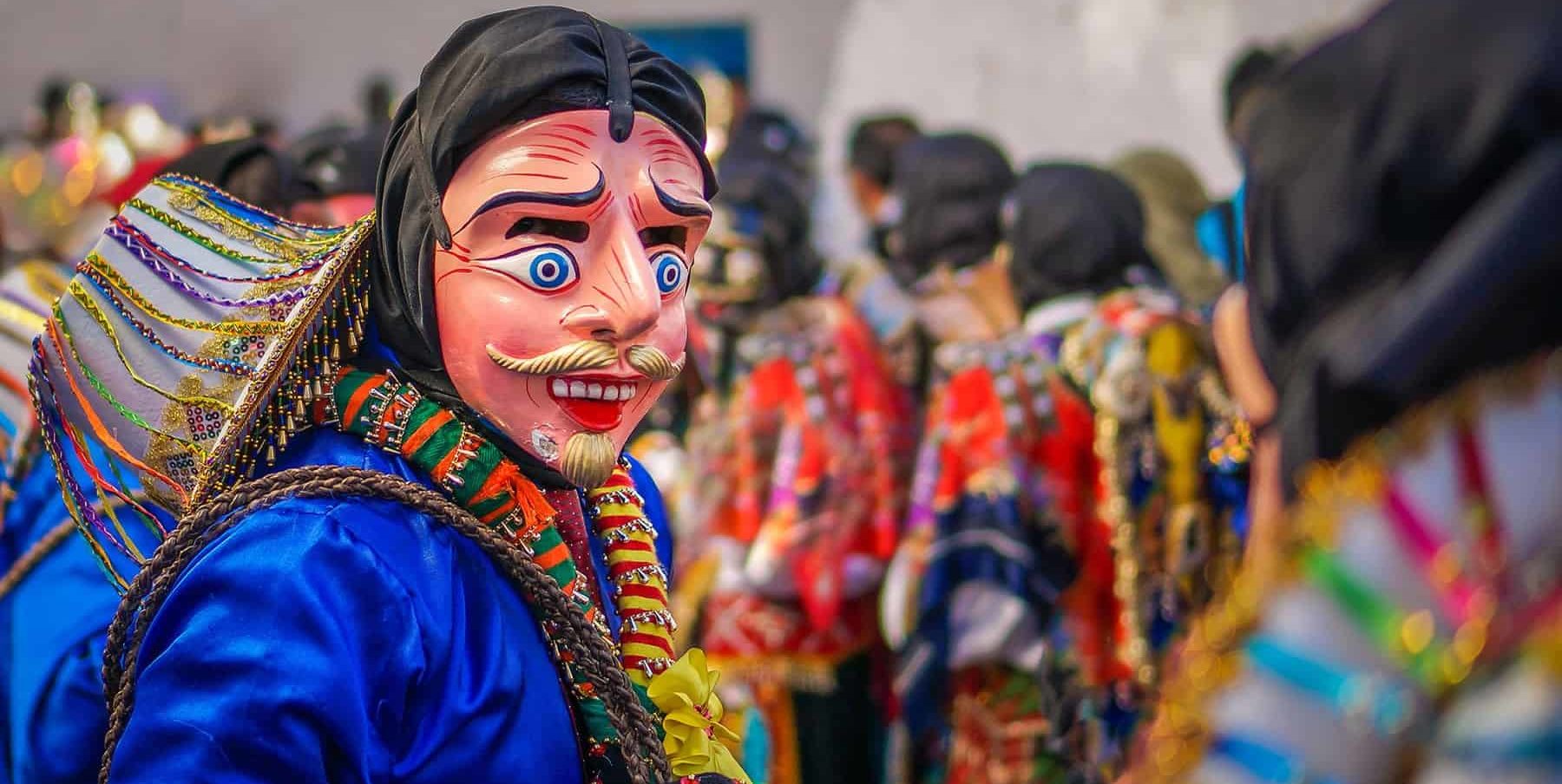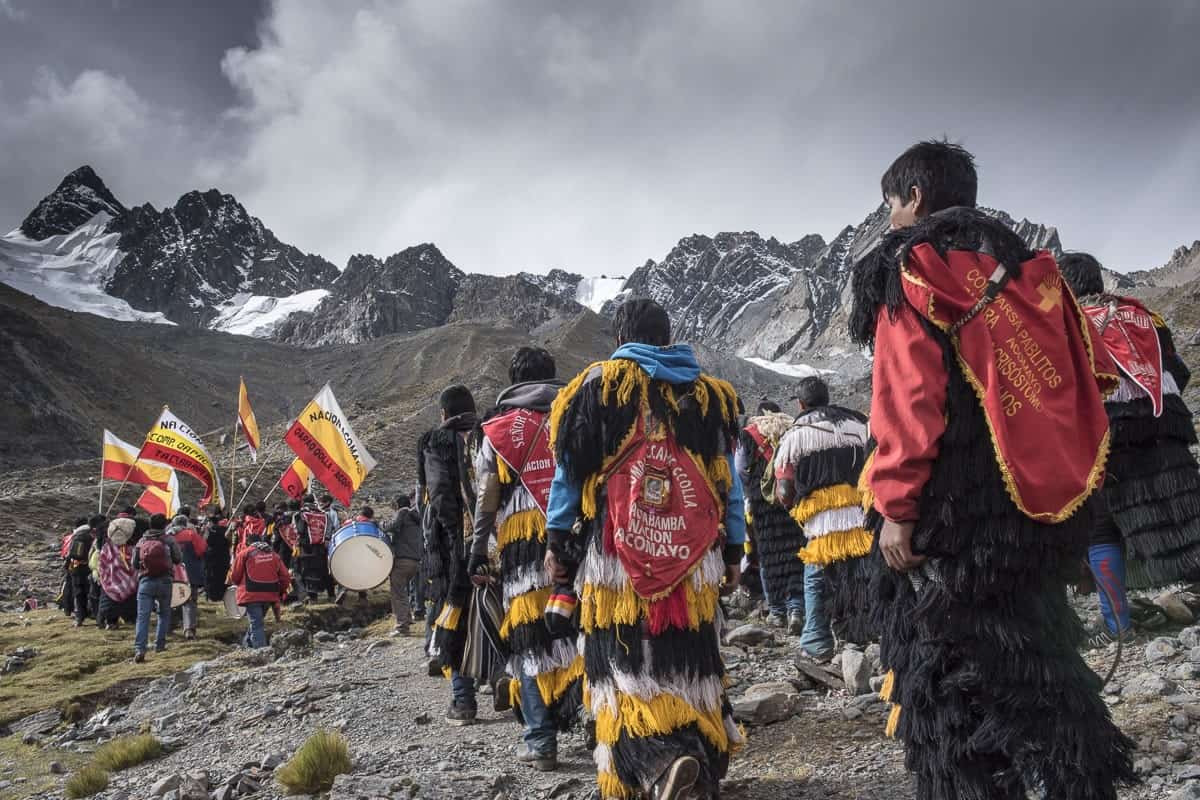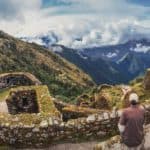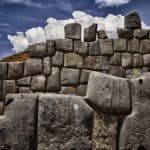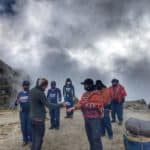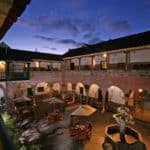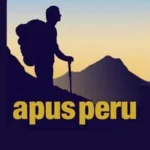Do you want to experience a unique festival like the locals do here in Peru, immersing yourself in the vibrant culture? Then you shouldn’t miss one of the most exciting and popular religious festivals in Peru, known as the Fiesta de la Virgen del Carmen, Paucartambo. This spectacular festival is held every year on the same date in mid-July in Paucartambo, which is located a three-hour drive away from Cusco, on the eastern slopes of the high Andes Mountains, not far from the tropical rainforest.
Peru has so much more to offer than just Machu Picchu and Rainbow Mountain – dare to have an authentic and cultural adventure from the perspective of locals! People from all over the country come to Paucartambo, playing their traditional music, dancing with colourful costumes, and celebrating in honor of La Virgen del Carmen (also known locally as Mamacha Carmen). Imagine a festivity that combines religion, art, dance, drinking and more, all rolled into one…it’s the Mardi Gras of Peru!
Want to know how to visit this incredible festival in Peru? Have a look at our Virgen del Carmen Festival tour
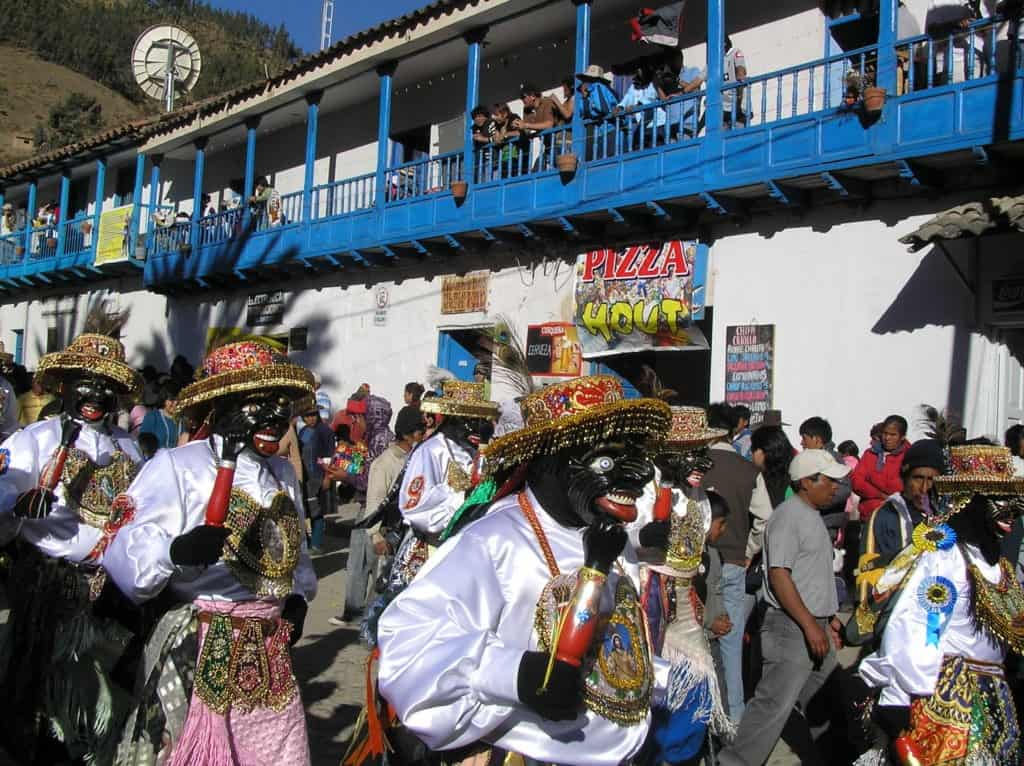
The Fiesta de la Virgen del Carmen: History & Origins in Spain
What is the story behind this Peruvian festival, and who actually is the Virgen del Carmen? Also known as Santa María del Monte Carmelo or Stella Maris, the Virgin of Carmen (which is Virgen del Carmen in English) refers to the Virgin Mary, and is a very significant Saint to the local population.
The Virgen del Carmen meaning derives from Mount Carmelo (546m / 1,790ft) located in the city of Haifa in Israel, a biblical place where the prophet Elijah dwelt. It was there where Elijah prayed to God for the salvation of Israel, which was suffering a terrible drought at the time. He sent his servant up to Mount Carmel to pray for rain. After the seventh try, the servant spotted a little cloud, rising from the sea.
Shortly after, it started to rain heavily and Israel was saved. Elijah saw the cloud as a symbol of the much-awaited Virgin mentioned in a prophecy who would become the mother of the Messiah. Hundreds of years later, many pilgrims came to this holy place with the purpose of keeping the Virgin Mary of Mount Carmelo safe. Today, the Virgen del Carmen is the protector of all waters, seamen, and fishermen.
The dedication to Virgin Mary became an important part of many Catholic-based countries. In Spain, faithful believers gave her the name of Stella Maris, or “The Star of the Seas”. Fishermen and seamen from La Costa honored their protector and patrona, believing that she cleared the waters to protect them. Until today, the Día de la Virgen del Carmen is celebrated on July 16th in many coastal towns and villages throughout Spain.
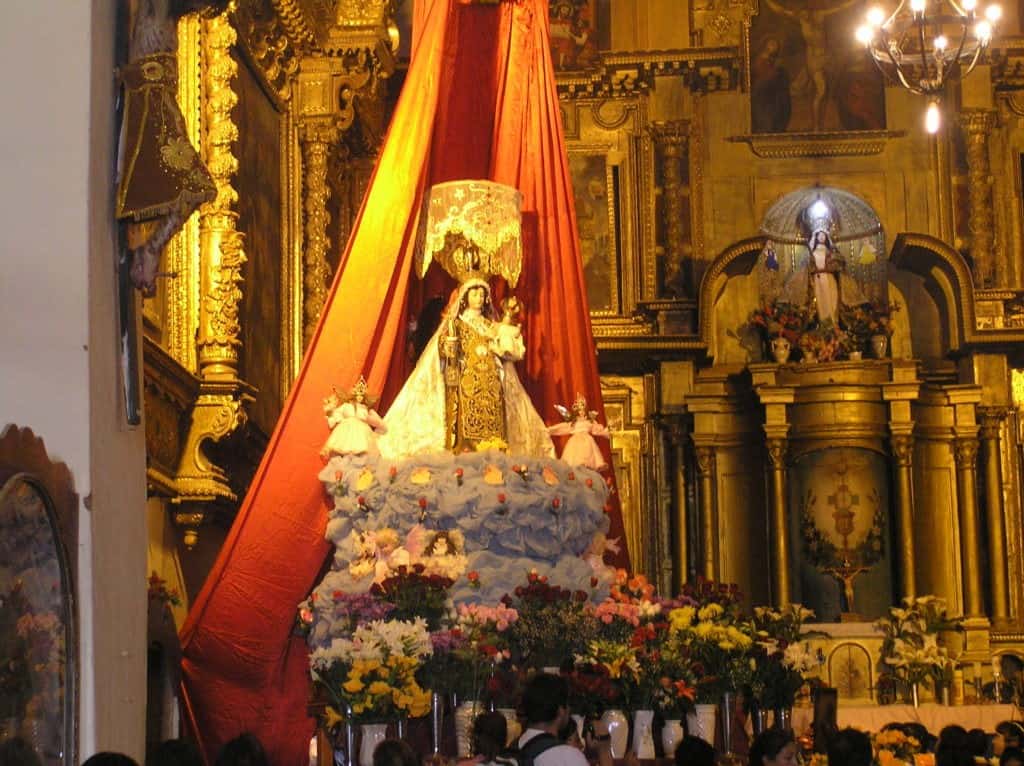
The Virgen del Carmen in Peru
When the Spanish conquered the ancient Inca Empire, they brought their traditions and Catholic beliefs to Peru, including the festival of the Virgin of Carmen. Today, Peruvian religion is a combination of Indigenous beliefs and Spanish Catholicism. La Mamacha Carmen became the patron saint of Paucartambo, and the Virgen del Carmen Festival one of the most popular holidays in Peru.
The Virgen del Carmen Paucartambo Festival
For many years, people have come to a little village in the region of Cusco to celebrate the Virgen del Carmen Festival. Bands of musicians play their traditional instruments, beautifully dressed choirs sing in Quechua, and parades take place throughout the day. The Virgen del Carmen de Paucartambo definitely is an unforgettable experience, but what is the story behind this Peruvian festival?
Where is the Virgen del Carmen Festival Held?
The Virgen del Carmen is celebrated in Paucartambo, a small town about three hours east of Cusco on the road to Manu National Park. This colonial town is the capital of the province Paucartambo in the Cusco region. Today, the Virgen del Carmen Fiesta attracts thousands of visitors from across Peru and all of South America.
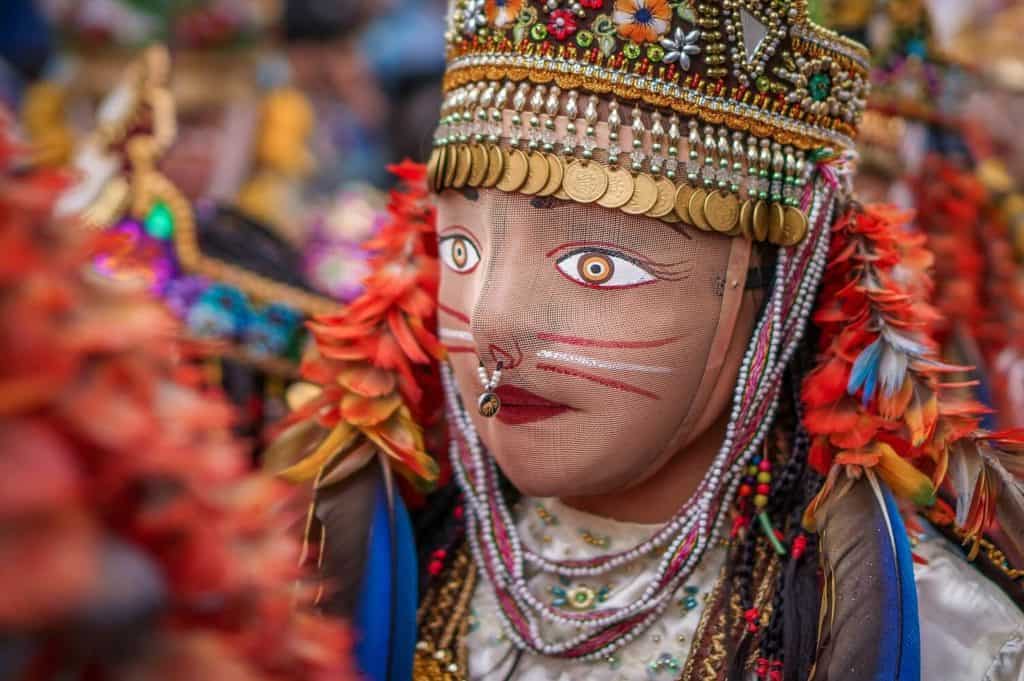
The Story behind the Virgen del Carmen, Peru
There are a number of quite different legends about the Virgen del Carmen story. It is believed that the origins of this Peruvian festival took place in the 17th century. According to one of many legends, inhabitants of the high Andes mountains were bringing their herd of llamas to Paucartambo to barter with locals. During their long journey, both immigrants and locals saw the face of a virgin in a clay pot. From that surprising apparition, they sculpted an image of the virgin and built a temple to venerate her.
Another legend is about a young female trader who headed to the little town of Paucartambo to trade a silver dish. Upon arrival in the village, she discovered a beautiful, bodiless head. When she placed the divine head on her dish, this head began to speak to her, saying that her name was Carmen and her purpose was to help the locals of Paucartambo. Carmen began to heal people and fulfill their deepest wishes. She performed various miracles among the community and it was said that she had rays of light glowing from her head.
The sculpture of the Virgin is very important to locals. She is locally known as “Mamacha Carmen” and the official patron saint of the mestizo population. It is believed that the colours of the Virgin’s cheeks forecast the fortune of the community. If her cheeks are red, it bodes well for the inhabitants, whereas pale cheeks augur bad times ahead.
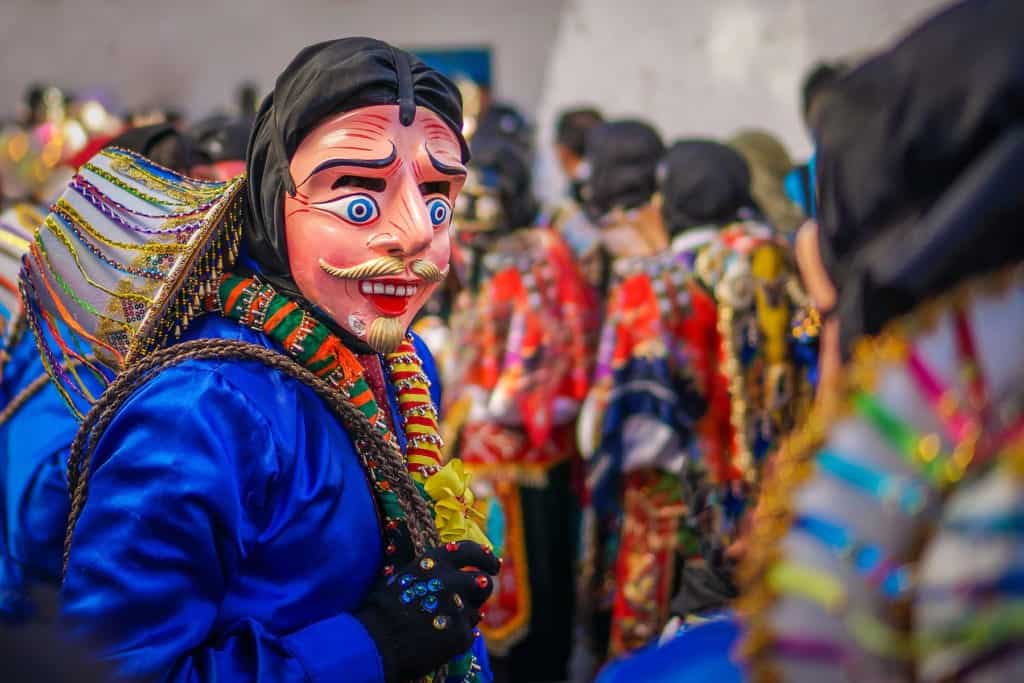
The Dances and Costumes
The Festival de la Virgen del Carmen consists of lots of traditional and significant dances by people in awesome costumes. Many of these dances have ingenious choreography that portray important events in Peruvian history. The dancers wear very colourful costumes and grotesque masks, representing colonial and religious characters during the procession, including demons, warriors, traders, colonials and guardians of the Virgin.
Some characters, such as doctors and lawyers, represent powerful bureaucrats who used to exploit local people. Another symbolic character is, for example, the black-masked Qhapaq Negro, depicting the African slaves who worked at the silver mines. Many other characters are parodied at the Virgen del Carmen Festival, such as red-nosed, drunken Spanish conquistadors, European colonial demons with blonde wigs and deformed masks, or monstrous-looking characters representing malaria victims.
Top tip: bring your hard hat! Some of the performers, especially these demons with grotesque masks, like to throw random items into the crowd: fruit, vegetables, balls and wooden spoons. They even climb up to the balconies and rooftops during the procession, gesticulating and dancing wildly.
The Virgen del Carmen Festival in Peru: What to Expect
The Virgen del Carmen Festival Peru takes place over four days and is held on July 15-18 every year in Paucartambo. In recent years, the annual event has become more popular, attracting thousands of travellers. The preparation of the Fiesta Virgen del Carmen, Cusco takes place over several months and every inhabitant of the community seems to take part, sewing costumes, creating grotesque masks, or practicing the traditional dance routines. But what exactly happens during these three days? Let us explain to you everything about this incredible Fiesta de la Virgen del Carmen Peru.

Day One (July 15)
The Virgen del Carmen Paucartambo festival begins with the explosion of a rocket and the ringing of bells. People then go to church, taking a moment to pray for their loved ones and leaving a little offering for the Virgin, such as flowers and candles. The participants decorate the altar with colourful flowers in honor of the Virgen del Carmen.
Afterwards, the procession itself begins, in which the dancers and bands perform their musical ensemble and swirl among the crowds. At night, there are spectacular fireworks and artists performing incredible fire shows. They jump through the fire to symbolically cleanse themselves from the negative energies and demons, stage historic battles, and perform all kinds of acrobatic shows for the crowds. It is an extravagant and very impressive program with lots of boisterous performances.

Day Two (July 16)
The second day, July 16, is the festival’s main day, in which the actual parade of the Virgen del Carmen Peru takes place. The Virgin, decorated with rose petals and flowers, is carried around the town in a spectacular procession to bless those present and scare away demons. The dancers become more and more animated as the festival progresses performing daring gymnastics, showing off their colourful Inca and colonial garb. At the end of the procession, “war” is waged on the demons, from which the faithful emerge in triumph.

Day Three (July 17)
On July 17, the gathering ends up in the cemetery to pay homage to the souls of the dead. Everyone joins in, including the performers, dancing and singing at the cemetery as a symbolic celebration of life and remembrance of death.
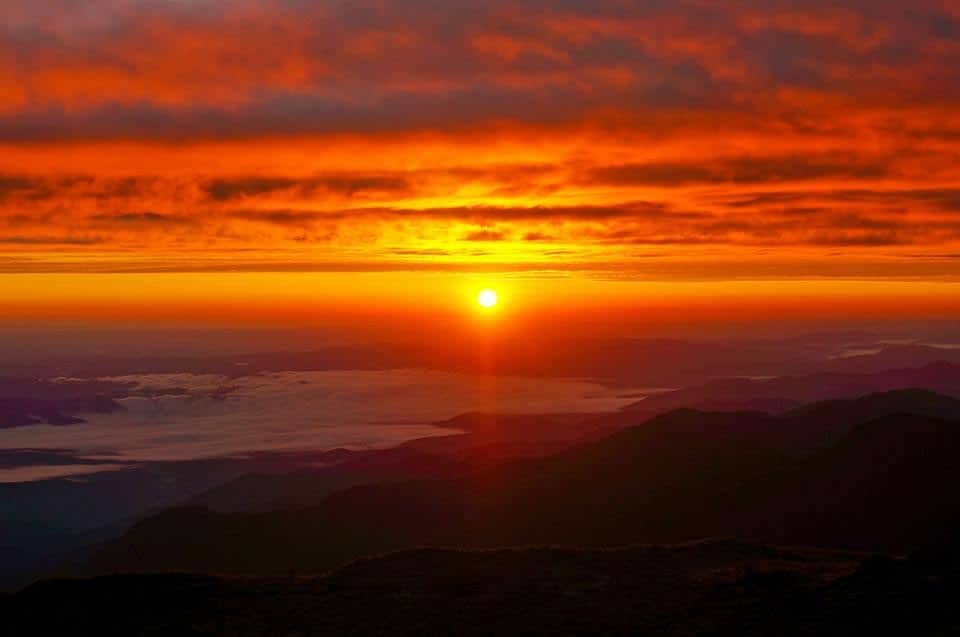
The Famous Sunrise at Tres Cruces, Paucartambo
About 40 kilometers north of Paucartambo is a lookout spot called Tres Cruces (Three Crosses), which is situated on the very edge of the high Andes Mountains at an altitude of 3,900m (12,795 ft). The viewpoint is also known as “The Balcony of the East” and is one of the three places in the world where you can actually see the winter solstice. At this mirador, you can see the Manu National Park’s vast jungle, the highest mountain range of the snow-capped Ausangate Mountain, the Paucartambo River, as well as the impressive mountain valley of Apuqañaqway.
Tres Cruces Paucartambo is most famous for the spectacular rising of the sun, with a variety of colours, shapes, and an incredible light show. It is a unique phenomenon that only occurs between May and July due to the special climate conditions during these months. Read more about how to reach this stunning destination and admire the breathtaking triple sunset of Paucartambo in our expert guide.
How to Visit Fiesta Virgen del Carmen, Paucartambo
Join Apus Peru on a tour and experience the Virgen del Carmen Festival first-hand! We offer adventurous and culturally enthusiastic travellers the unique opportunity to be entertained during the Virgen del Carmen Paucartambo festival, and this year (2022) is no exception! This Andean Fiesta lasts four days and includes beautiful dances, local food, and gorgeous parades (not to mention a fair bit of alcohol).
With Apus Peru, travellers get to immerse themselves in the local culture with private transportation, a guide, and cooks to keep them comfortable. Our two departures on July 15-16 and July 17-18 combine attending this incredibly colourful festival in Paucartambo with a trip to Tres Cruces. We only offer these two departure dates, so plan your trip around these dates and book early to be sure you don’t miss out!
Do you want to join the Virgen del Carmen Festival this year? Contact our friendly travel experts for personalised attention.
What to Expect on Day 1: Cusco – Ninamarca – Paucartambo – Tres Cruces
The Virgen del Carmen Festival Tour itinerary starts with a few hours’ drive to Paucartambo, stopping along the way at the pre-Inca cemetery known as the chullpas of Ninamarca, which in Quechua means the “far-away place”. It is a fascinating cylindrical ruin located on a hill near the road. From there it doesn’t take long to reach the city of Paucartambo, unless you get caught in the mob of buses, vans, and taxis shuttling hundreds of party-hungry Peruvians.
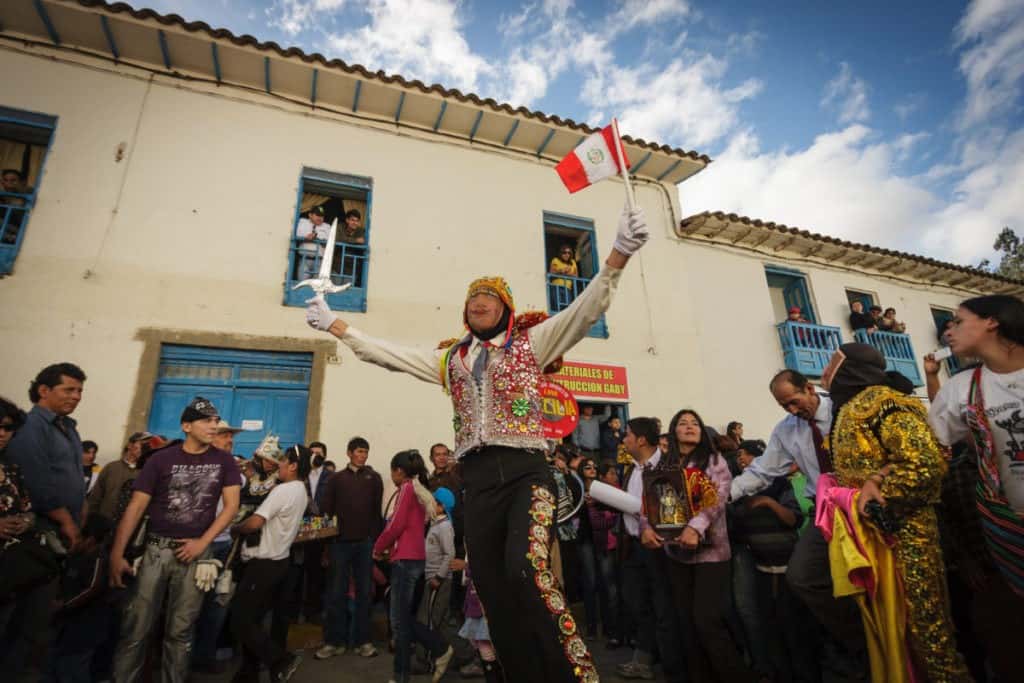
Arriving in Paucartambo around midday for lunch, you will have enough time to get ready before the streets are filled with crowds. We head out exploring the town with its beautiful church, and have the opportunity to witness the Virgen del Carmen’s famous dancers at the main plaza. Each group parades through the town, across a colonial bridge, into the main square, and to the church where they present themselves to the sculpture of the Virgen del Carmen Paucartambo — an important invocation of the Virgin Mary to people in Paucartambo and many Catholics around the globe.
Our local guide knows all the best routes and viewing spots in town, allowing us to catch some glimpses of the dancers away from the main crowds. Each of the dances carries a unique meaning that ranges from comical to religious; one group will poke fun at bull fighting while another dressed as demons will try to carry away the souls of the crowd, only to shrink in fear when they see the Virgin.
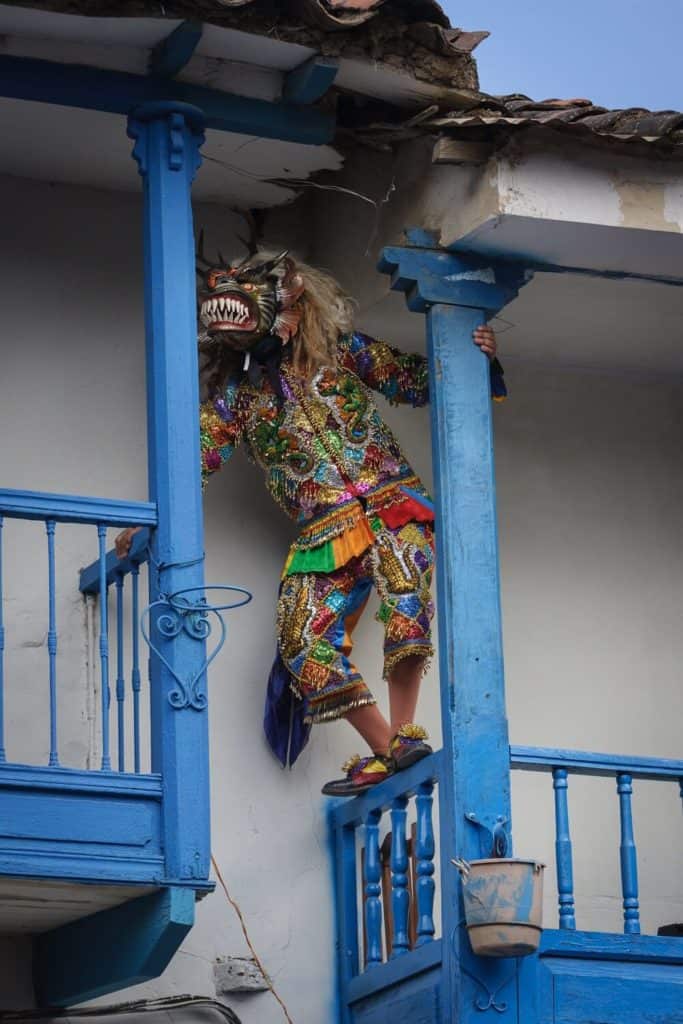
Fireworks, dancing & more in the evening of Day 1
After the main procession, we will have dinner and spend a little time recovering before we go back to the main square for fireworks. We will find a good vantage point close to the main plaza, where the heart of the festivities takes place, so we are able to take in some amazing firework displays.
To describe the display as crazy would probably be an understatement. First, dancers with whips clear the crowd and make a path that circles the main square. Then they pile dry grass in heaps along the paths and light it on fire. As the fires burn down, the dancers jump over them and grab women from the audience to hoist over the flames.
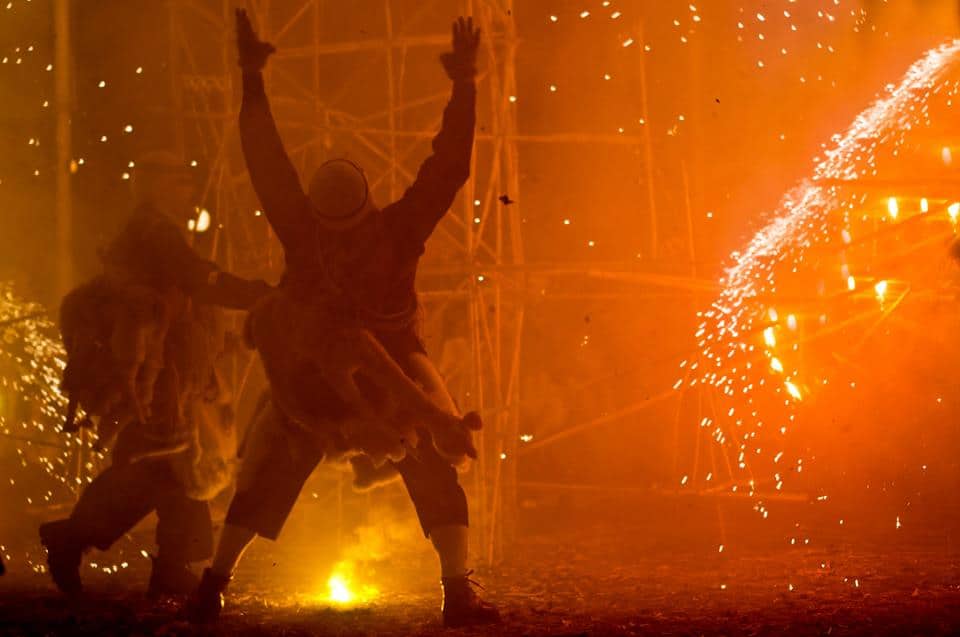
The fireworks represent the flames of hell and are carried on top of long poles. As the dancers circle the plaza, they hold the poles over the crowd to shower them with sparks. Some of the fireworks burn for a while and then shoot into the air, or, on rare occasions, sidewise into the onlookers. Most of the people just laugh off these mishaps and proudly show off the burn marks on their clothes.
Finally, four firework towers about ten meters high are lit. They spray coloured sparks over the crowd and some even have a spinning top with the words “Virgen del Carmen” emblazoned on it. At the very end a huge burst of mortars is shot skyward and explodes right over the crowd, raining down a spectacular shower of sparks.
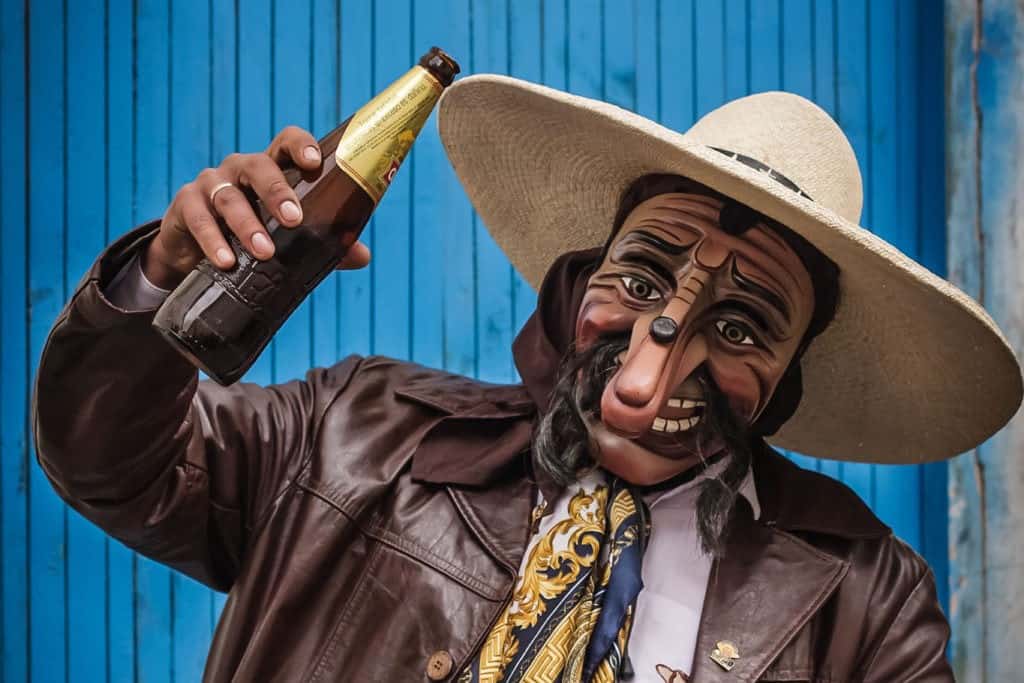
Camp Overnight at Tres Cruces
After enjoying our first taste of the festivities, we will leave the roaring party behind and head up towards Tres Cruces (3800m/ 12,467ft) where we will set up our camp, since we will wake up early in the morning for the sunrise. We will probably be accompanied by other festival participants, so there may be music playing and people celebrating into the night!
What to Expect on Day 2: Tres Cruces – Paucartambo – Cusco
At this festival sleep is brief, since we will wake early to catch the sunrise at the Tres Cruces Paucartambo viewpoint near the Parque Nacional del Manu, the place where the Andes Mountains meet the Amazon rainforest. Early risers are treated to the most spectacular sunrise and, sometimes, a strange natural phenomenon that gives the illusion of seeing three suns rising! This is due to the special lighting at this time of year and the rare, changing micro-climate.
We will enjoy a hot drink with a sandwich as we await this incredible natural light show. After spending some time admiring the spectacular rising of the sun with a variety of colours and shapes, we will return back to Paucartambo around 7 am.
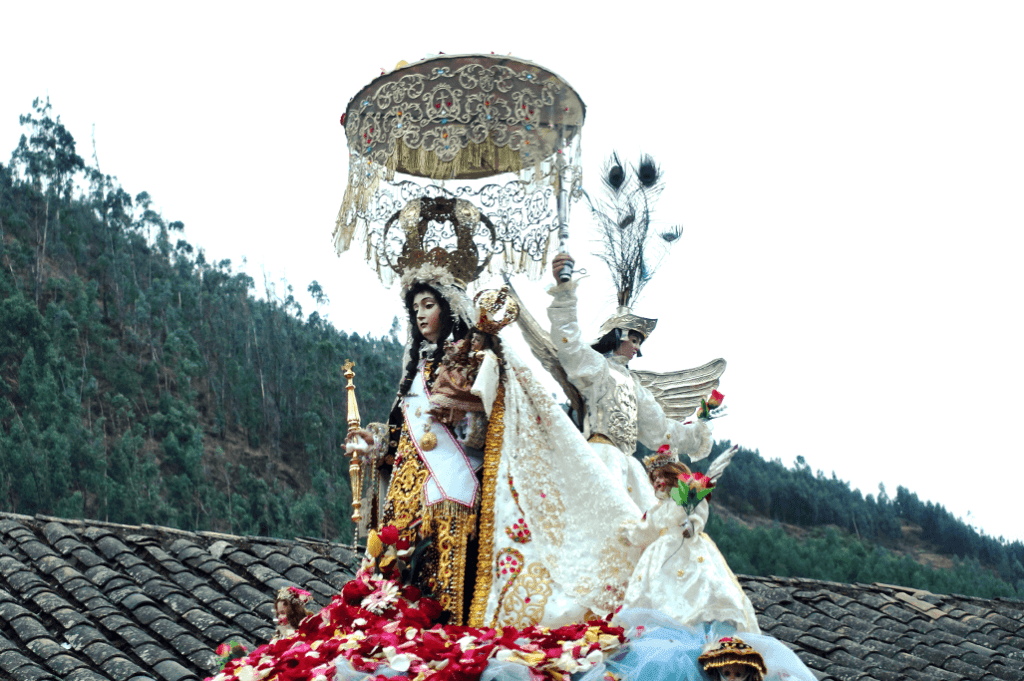
Today is the main event, the moment everyone is eagerly waiting for: It is time to witness the procession of the Virgin. Led by dancers and carried by straining devotees, the statue of the Virgen del Carmen makes its way through crowded streets. The classic place to watch the statue of the Virgin being carried is from the Colonial Bridge, a village icon built by King Carlos III of Spain in the 1760s. We will be able to watch more than 15 typical dances that are traditional to the Virgen del Carmen Festival. Once the procession has passed, the revellers return to the party — back to eating and back to drinking! At 5:30 pm, we will rest a little and pack up the car to return to Cusco, arriving at around 9 pm.
This Virgen del Carmen Paucartambo Festival Tour is something truly unforgettable and a once-in-a-lifetime experience that you shouldn’t miss!
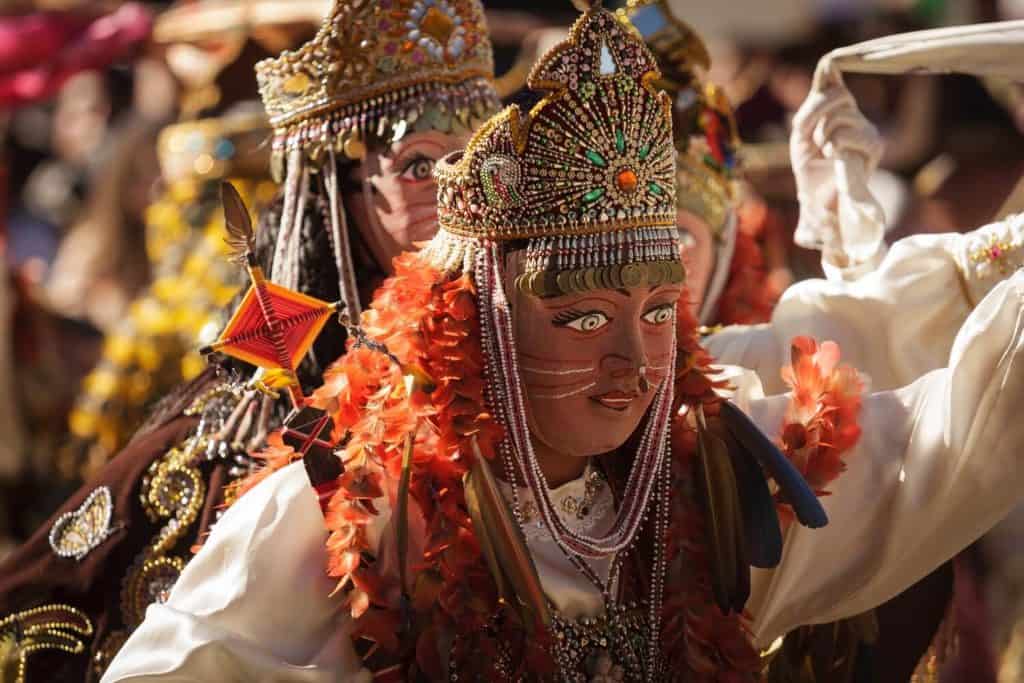
Plan Your Trip Around a Peruvian Festival!
Are you interested in other festivals in Peru? We’ve got you covered! In addition to Virgen de Carmen, Apus Peru offers tours and treks to several Fiestas in Peru. Including festival visits in your trip to Peru is a great opportunity to experience local culture and history, plus have a great time! Festivals are pretty much non-stop in Peru, so it is likely one will fit your schedule. Please see our festival calendar and our guide on festivals in Cusco for more information and travel inspiration!
There is so much more to explore! Inti Raymi, the fascinating Sun Festival held in Cusco, is a colorful event about honoring the Inca sun god, and you can expect lively parades, traditional music, and reenactments that take you right back to ancient times. It’s a feast for the senses!
Join in on these unforgettable moments and immerse yourself in the rich cultural tapestry of Peru!
Like it? Pin it!
Related:
- Festivals in Peru: A Guide to Peru’s Cultural Calendar
- The ULTIMATE Guide to the Qoyllur Rit’i Festival in Peru
- Q’eswachaka: A Swinging Festival for the Last Inca Rope Bridge in Peru
Originally posted July 11th, 2011; updated in May, 2022.

